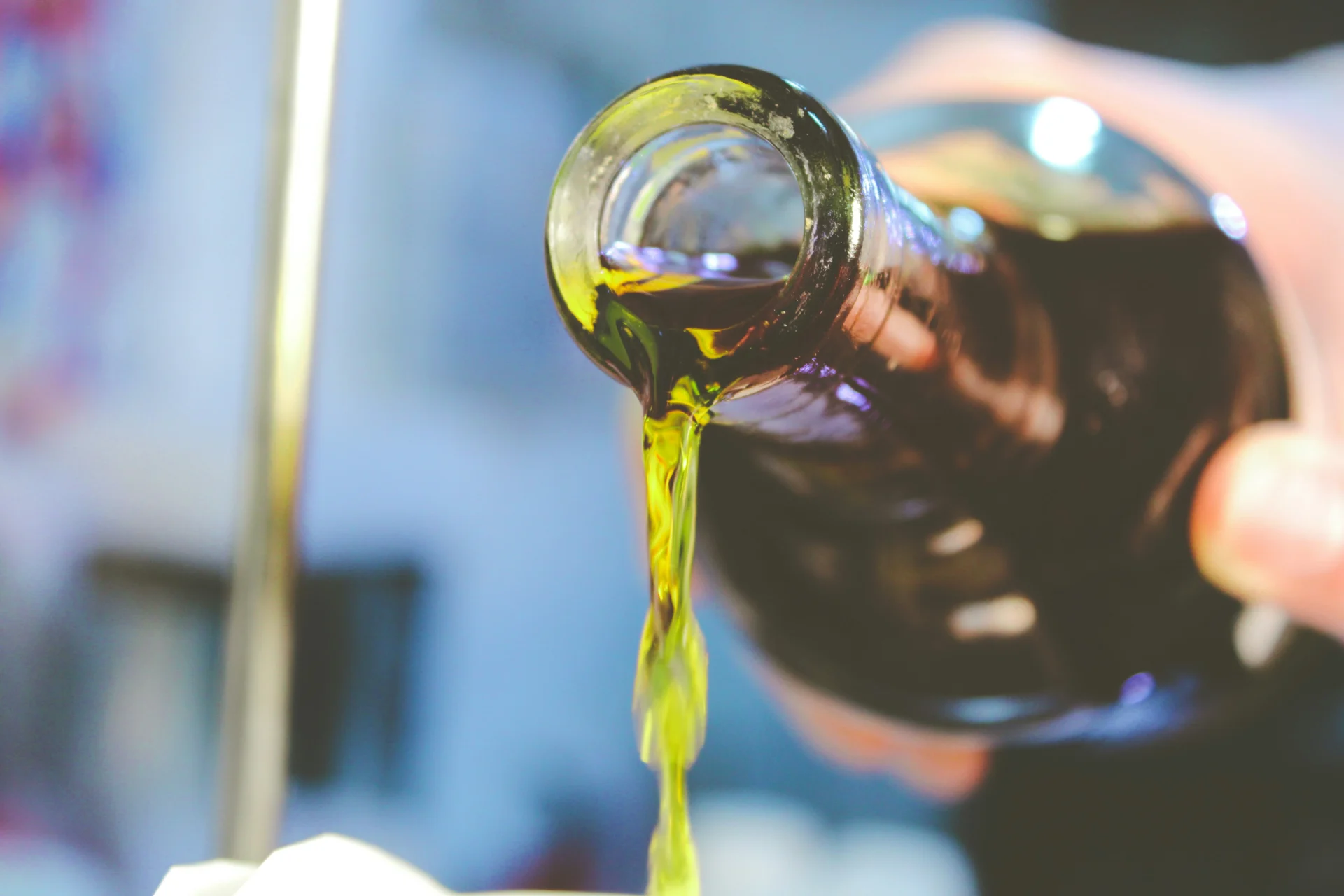2-Chlorobenzyl chloride is a chemical compound that has various applications in everyday life. It is commonly used in the production of pharmaceuticals, pesticides, and dyes. For example, it is a key ingredient in the synthesis of certain drugs used to treat cardiovascular diseases and microbial infections. Furthermore, it is utilized in the manufacturing of herbicides and insecticides to protect crops from pests. Overall, 2-Chlorobenzyl chloride plays a significant role in various industries, contributing to the development of essential products that impact our daily lives.
Table of Contents:
- 💡 Commercial Applications
- ⚗️ Chemical & Physical Properties
- 🏭 Production & Procurement
- ⚠️ Safety Considerations
- 🔬 Potential Research Directions
- 🧪 Related Compounds
💡 Commercial Applications
2-Chlorobenzyl chloride, also known as benzyl chloride, is widely used in commercial and industrial applications. It is commonly used as a precursor in the synthesis of various chemicals, including pharmaceuticals, dyes, and fragrances. Additionally, it is used in the production of chemicals for the rubber and plastics industries due to its role as a versatile building block.
In the realm of drug and medication applications, 2-Chlorobenzyl chloride plays a crucial role in the pharmaceutical industry. It is utilized in the synthesis of various drugs and medications, including antihistamines, antiseptics, and antibiotics. Its specific chemical structure makes it an important intermediate in the production of these life-saving compounds.
Overall, 2-Chlorobenzyl chloride is a valuable compound in both commercial and industrial settings. Its versatility and reactivity make it an essential building block in the synthesis of various chemicals, including pharmaceuticals and other important products. Its wide range of applications highlights its significance in the chemical industry.
⚗️ Chemical & Physical Properties
2-Chlorobenzyl chloride is a colorless to pale yellow liquid with a pungent, irritating odor. It is commonly used as an intermediate in the production of pharmaceuticals and agrochemicals due to its reactivity and ability to undergo various chemical reactions.
With a molar mass of 154.56 g/mol and a density of 1.30 g/cm³, 2-Chlorobenzyl chloride is significantly heavier than common food items such as water (molar mass of 18.02 g/mol, density of 1.00 g/cm³) and olive oil (molar mass of 884.48 g/mol, density of 0.91 g/cm³).
2-Chlorobenzyl chloride has a melting point of -22°C and a boiling point of 204-205°C, which fall within a range that is higher than that of water (melting point of 0°C, boiling point of 100°C) and lower than that of olive oil (melting point of -6°C, boiling point of 293-328°C).
In terms of solubility in water, 2-Chlorobenzyl chloride is only slightly soluble, and it exhibits low viscosity. This differs from common food items such as sugar (high solubility in water) and honey (high viscosity).
🏭 Production & Procurement
2-Chlorobenzyl chloride is typically produced through the chlorination of 2-Chlorotoluene using chlorine gas or other chlorinating agents. This reaction is usually carried out in the presence of a catalyst such as iron chloride or aluminum chloride.
To procure 2-Chlorobenzyl chloride, one may source it from chemical suppliers that specialize in aromatic compounds. The compound is often available in liquid form or as a crystalline solid, depending on the supplier and the intended use. Transportation of 2-Chlorobenzyl chloride is usually done in sealed containers to prevent leakage and exposure to moisture or other contaminants.
When procuring 2-Chlorobenzyl chloride, it is important to ensure that the compound meets the required purity standards for the intended application. Quality control measures should be in place to verify the identity and purity of the compound before it is used in any chemical reactions or processes. Additionally, proper handling and storage procedures should be followed to prevent any accidents or chemical hazards associated with 2-Chlorobenzyl chloride.
⚠️ Safety Considerations
Safety considerations for 2-Chlorobenzyl chloride include its potential to cause skin and eye irritation upon contact. It should be handled with adequate ventilation and appropriate personal protective equipment, such as gloves and goggles, to prevent skin or eye exposure. Additionally, 2-Chlorobenzyl chloride should be stored in a cool, dry place away from incompatible materials to avoid any potential reactions or accidents.
Hazard statements for 2-Chlorobenzyl chloride include “Causes skin and eye irritation” and “May cause respiratory irritation.” These statements indicate the potential risks associated with exposure to this compound. It is important to handle 2-Chlorobenzyl chloride with caution, taking necessary safety measures to avoid any adverse effects on health.
Precautionary statements for 2-Chlorobenzyl chloride include “Wear protective gloves and eye protection” and “Use only outdoors or in a well-ventilated area.” These statements emphasize the importance of using proper personal protective equipment and ensuring adequate ventilation when handling this compound. It is crucial to follow these precautions to minimize the risks associated with 2-Chlorobenzyl chloride exposure.
🔬 Potential Research Directions
One potential research direction for 2-Chlorobenzyl chloride lies in exploring its use as a precursor in organic synthesis reactions. By further investigating the reactions of this compound with various nucleophiles and electrophiles, researchers may uncover new ways to functionalize aromatic compounds.
Another avenue of research could focus on the environmental impact of 2-Chlorobenzyl chloride. Understanding the fate and transport of this compound in the environment, as well as its potential toxicity to organisms, can provide valuable insights into its potential risks and implications for human health and the ecosystem.
Additionally, research could delve into the development of novel synthetic methodologies utilizing 2-Chlorobenzyl chloride as a key building block. By exploring alternative routes to access various derivatives of this compound, researchers may discover more efficient and sustainable approaches to synthesizing valuable organic molecules.
🧪 Related Compounds
One similar compound to 2-Chlorobenzyl chloride is 2-Bromobenzyl chloride. This compound has a bromine atom in place of the chlorine atom, leading to similar chemical reactivity and properties. 2-Bromobenzyl chloride is commonly used in organic synthesis for the introduction of the benzyl chloride functional group.
Another related compound is 2-Methylbenzyl chloride. In this compound, a methyl group replaces one of the hydrogen atoms on the benzene ring. This substitution can impact the compound’s reactivity and selectivity in certain chemical reactions. 2-Methylbenzyl chloride is utilized in various industrial applications for the production of pharmaceuticals and agrochemicals.
A third comparable compound is 2-Nitrobenzyl chloride. This compound contains a nitro group (-NO2) attached to the benzene ring instead of a halogen atom. The nitro group can significantly alter the compound’s chemical properties and reactivity compared to 2-Chlorobenzyl chloride. 2-Nitrobenzyl chloride is often employed in organic synthesis for the introduction of the nitro group into various organic molecules.







